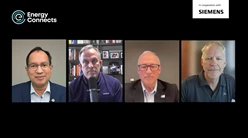Turning the tide on methane: IEA finds signs of real progress in limiting emissions
In a landscape often dominated by climate doom and finger-pointing, the IEA Global Methane Tracker 2025 offers something rare: evidence that targeted action on methane emissions can deliver real results, fast.
While global methane emissions from fossil fuels remain high, the report highlights a growing momentum towards better measurement, regulation, and reduction, particularly among countries serious about meeting their climate goals.
“Tackling methane leaks and flaring offers a double dividend: it alleviates pressure on tight gas markets in many parts of the world, enhancing energy security – and lowers emissions at the same time,” said IEA Executive Director Fatih Birol in a press statement.
“The IEA is working to ensure that governments and industry have the tools and knowledge they need to deliver on pledges and achieve the goals they have set,” he added.
Improved detection is driving smarter action
Thanks to major advances in satellite monitoring and aerial surveys, methane leaks that once went unnoticed are now being tracked in near real-time. This technological leap is already pushing companies and governments to act more swiftly and transparently.
Nations like the United States, China, and Canada are investing in monitoring infrastructure and mandating more accurate emissions reporting.
In 2024 alone, thousands of “super-emitter” events were detected and flagged for action. This kind of data transparency empowers regulators, civil society, and even investors to hold polluters accountable and prioritise areas with the greatest impact.
Policy is catching up to the science
The IEA’s 2025 report notes that policy responses are accelerating.
Canada has rolled out stricter methane limits across its oil and gas sector, while Kazakhstan and Colombia are implementing their first ever national frameworks for methane reduction.
The UK is updating North Sea regulations to include continuous leak detection technologies, and China has recently announced national methane targets backed by implementation pilots in several provinces.
Tackling abandoned infrastructure with strategic investment
The report also reframes the challenge of abandoned oil and gas wells as a solvable problem not an inevitable liability.
Plugging and remediating millions of legacy sites could cut 8 million tonnes of methane a year. That is roughly equal to the emissions of a major fossil fuel-producing country.
Though the estimated global cost of $100 billion is substantial, the IEA emphasises that this would bring long-term environmental and economic returns by creating jobs, reducing health risks, and reclaiming land for productive use.
Momentum is building around global cooperation
Perhaps most encouraging is the expanding reach of the Global Methane Pledge. Over 150 countries have now signed on, with many submitting detailed action plans. International funding and technical support — especially for low- and middle-income countries — is increasing through climate finance mechanisms and multilateral programmes.
The IEA also points to rising private sector engagement. Energy companies are beginning to treat methane not as a cost but as a resource.
Capturing and selling gas that would otherwise leak or be flared makes financial sense, and that economic logic is starting to shape boardroom decisions.






